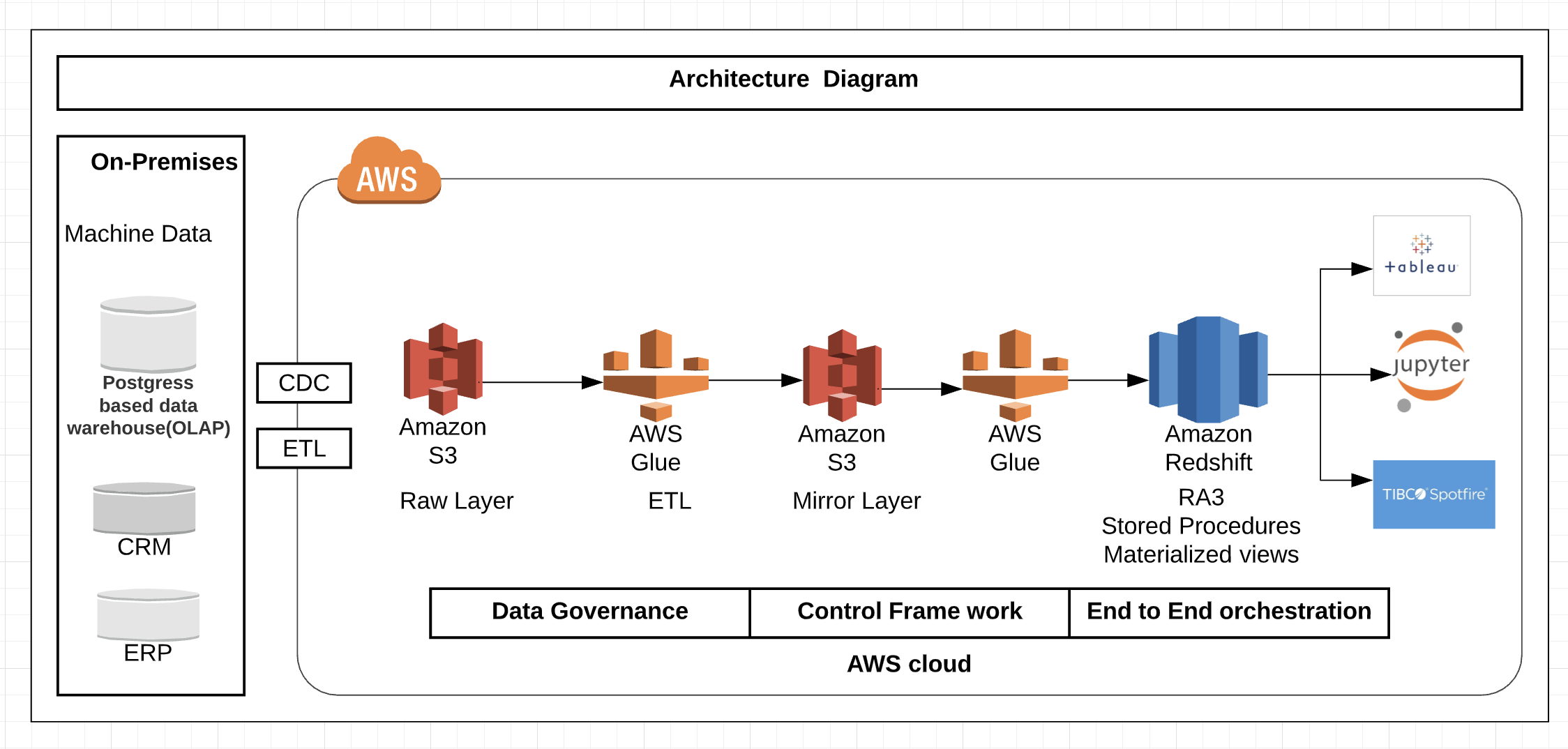AWS Big Data Blog
How GE Healthcare modernized their data platform using a Lake House Architecture
GE Healthcare (GEHC) operates as a subsidiary of General Electric. The company is headquartered in the US and serves customers in over 160 countries. As a leading global medical technology, diagnostics, and digital solutions innovator, GE Healthcare enables clinicians to make faster, more informed decisions through intelligent devices, data analytics, applications, and services, supported by its Edison intelligence platform.
GE Healthcare’s legacy enterprise analytics platform used a traditional Postgres based on-premise data warehouse from a big data vendor to run a significant part of its analytics workloads. The data warehouse is key for GE Healthcare; it enables users across units to gather data and generate the daily reports and insights required to run key business functions. In the last few years, the number of teams accessing the cluster increased by almost three times, with twice the initial number of users running four times the number of daily queries for which the cluster had been designed. The legacy data warehouse wasn’t able to scale to support GE Healthcare’s business needs and would require significant investment to maintain, update, and secure.
To see how General Electric is innovating more with AWS visit General Electrics Leading Cloud Innovator page.
Searching for a modern data platform
After working for several years in a database-focused approach, the rapid growth in the data made the GEHC’s on-prem system unviable from a cost and maintenance perspective. This presented GE Healthcare with an opportunity to take a holistic look at the emerging and strategic needs for data and analytics. With this in mind, GE Healthcare decided to adopt a Lake House Architecture using AWS services:
- Use Amazon Simple Storage Service (Amazon S3) to store raw enterprise and event data
- Use familiar SQL statements to combine and process data across all data stores in Amazon S3 and Amazon Redshift
- Apply the “best fit” concept of using the appropriate AWS technology to meet specific business needs
Architecture
The following diagram illustrates GE Healthcare’s architecture.
Choosing Amazon Redshift for the enterprise cloud data warehouse
Choosing the right data store is just as important as how you collect the data for analytics. Amazon Redshift provided the best value because it was easy to launch, access, and store data, and could scale to meet our business needs on demand. The following are a few additional reasons for why GE Healthcare made Amazon Redshift our cloud data warehouse:
- The ability to store petabyte-scale data in Amazon S3 and query the data in Amazon S3 and Amazon Redshift with little preprocessing was important because GE Healthcare’s data needs are expanding at a significant pace.
- The AWS based strategy provides financial flexibility. GE Healthcare moved from a fixed cost/fixed asset on-premises model to a consumption-based model. In addition, the total cost of ownership (TCO) of the AWS based architecture was less than the solution it was replacing.
- Native integration with the AWS Analytics ecosystem made it easier to handle end-to-end analytics workflows without friction. GE Healthcare took a hybrid approach to extract, transform, and load (ETL) jobs by using a combination of AWS Glue, Amazon Redshift SQL, and stored procedures based on complexity, scale, and cost.
- The resilient platform makes recovery from failure easier, with errors further down the pipeline less likely to affect production environments because all historical data is on Amazon S3.
- The idea of a Lake House Architecture is that taking a one-size-fits-all approach to analytics eventually leads to compromises. It’s not simply about integrating a data lake with a data warehouse, but rather about integrating a data lake, a data warehouse, and purpose-built data stores and enabling unified governance and easy data movement. (For more information about the Lake House Architecture, see Harness the power of your data with AWS Analytics.)
- It’s easy to implement new capabilities to support emerging business needs such as artificial intelligence, machine learning, graph databases, and more because of the extensive product capabilities of AWS and the Amazon Redshift Lake House Architecture.
Implementation steps and best practices
As part of this journey, GE Healthcare partnered with AWS Professional Services to accelerate their momentum. AWS Professional Services was instrumental in following the Working Backwards (WB) process, which is Amazon’s customer-centric product development process.
Here’s how it worked:
- AWS Professional Services guided GE Healthcare and partner teams through the Lake House Architecture, sharing AWS standards and best practices.
- The teams accelerated Amazon Redshift stored procedure migration, including data structure selection and table design.
- The teams delivered performant code at scale to enable a timely go live.
- They implemented a framework for batch file extract to support downstream data consumption via a data as a service (DaaS) solution.
Conclusion
Modernizing to a Lake House Architecture with Amazon Redshift allowed GEHC to speed up, innovate faster, and better solve customers’ needs. At the time of writing, GE Healthcare workloads are running at full scale in production. We retired our on-premises infrastructure. Amazon Redshift RA3 instances with managed storage enabled us to scale compute and storage separately based on our customers’ needs. Furthermore, with the concurrency scaling feature of Amazon Redshift, we don’t have to worry about peak times affecting user performance any more. Amazon Redshift scales out and in automatically.
We also look forward to realizing the benefits of Amazon Redshift data sharing and AQUA (Advanced Query Accelerator) for Amazon Redshift as we continue to increase the performance and scale of our Amazon Redshift data warehouse. We appreciate AWS’s continual innovation on behalf of its customers.
About the Authors
 Krishna Prakash (KP) Bhat is a Sr. Director in Data & Analytics at GE Healthcare. In this role, he’s responsible for architecture and data management of data and analytics solutions within GE Healthcare Digital Technologies Organization. In his spare time, KP enjoys spending time with family. Connect him on LinkedIn.
Krishna Prakash (KP) Bhat is a Sr. Director in Data & Analytics at GE Healthcare. In this role, he’s responsible for architecture and data management of data and analytics solutions within GE Healthcare Digital Technologies Organization. In his spare time, KP enjoys spending time with family. Connect him on LinkedIn.
 Suresh Patnam is a Solutions Architect at AWS, specialized in big data and AI/ML. He works with customers in their journey to the cloud with a focus on big data, data lakes, and AI/ML. In his spare time, Suresh enjoys playing tennis and spending time with his family. Connect him on LinkedIn.
Suresh Patnam is a Solutions Architect at AWS, specialized in big data and AI/ML. He works with customers in their journey to the cloud with a focus on big data, data lakes, and AI/ML. In his spare time, Suresh enjoys playing tennis and spending time with his family. Connect him on LinkedIn.

